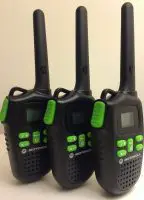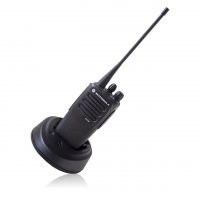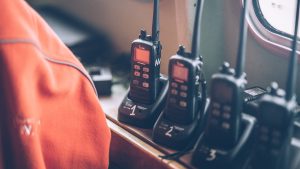You may think that walkie talkies are easy-to-use, and for the most part you would be right. However, it’s always good for you to get familiar with your walkie talkie and learn how to properly use it before you find yourself on an outdoor adventure. Learning how to use a walkie talkie before you need it ensures that you don’t have that moment of panic because it’s not working how you think it would. This guide will give you some basics on how to get started using your walkie talkie.

Table of Contents
Make Sure that You Charge Its Batteries
A walkie talkie that dies on you while you’re out and about is useless to you. Some options come with AAA batteries, so make sure that these have enough charge for your trip and make sure that you bring along extras for just in case scenarios. Other options can be charged by USB, which means that it’s a good idea to let them charge before you leave. If you have an extra battery bank, be sure to back that as well. Always check the charge before you go out.
It’s also a good idea for you to just do regular check-ins with the walkie talkie, so that you don’t need to have the walkie talkie on at all times. This will help you conserve battery life.
Be Sure to Sync Not Only Channels, But Also Privacy Codes
Are you going out with a group, where the individuals will have a walkie talkie? If so, you want to make sure that the walkie talkies are synced to the same channel. It’s a good idea to test the channel first to make sure that it’s not currently in use. You will also need to sync the privacy codes, which can prevent users from accidentally leaving your channel to go to another one.
Why is this important? If you are all on the wrong channel, you won’t be able to communicate with each other. That means that it would be pretty useless for all of you to have a walkie talkie. By making sure that you are all on the same channel, you are able to reach out to your fellow outdoor crew in case an emergency happens.
Focus On Storage and Accessibility
The primary reason for having a walkie talkie is to help you should there be an emergency. What this means is that you need to be smart where you store your walkie talkie. You want to put it someplace where it is easy to reach without being someplace where you will frequently hit the push-to-talk button on accident. Some walkie talkies have clips on them, which you can attach to your backpack or other accessories that you may be wearing while you are on your trip.
If you are doing anything that is intense activity, you may want to consider having the walkie talkie attached using a bungee cord type of strap. This will offer the durability that you need to make sure that your walkie talkie is secure.
The good news is that most walkie talkies are durable options, which are waterproof and weatherproof. You may even find options that are completely immersible or can even float. These are great if you are planning any water activities like boating or paddling. However, if you don’t have a completely waterproof walkie talkie, it’s a good idea to store your walkie talkie inside of your coat zippered pocket to keep it as safe as possible.
Be Aware of the Walkie Talkie’s Range and Any Potential Obstructions
Walkie talkies do have a range that you need to be aware of before you go out on your adventure. There are also things that can negatively impact the range of the walkie talkie. Things like weather, being in separate vehicles, and trees can obstruct the range, which can often be problematic. What does this mean for you? As you are looking at the range of the walkie talkies, remember that the range is an average based on situations where the line of sight is absolutely perfect.
When you invest in a good quality walkie talkie, you will have better range even with some obstructions.
Use Proper Communication Etiquette on the Walkie Talkie
Lastly, it’s important that you use proper etiquette when using the radios. This includes:
- Wait for the line to be clear and the other parties to have finished speaking before you speak.
- Say “Over” when you’re done speaking.
- Before you say anything, make sure that you know what you want to say.
- When ready to speak, keep it short and concise.
Conclusion
For the most part, especially when you have a basic walkie talkie, these are relatively simple for you to get started with. Even the more complicated options can follow some of the basic steps. It’s always a good idea to go over the instructions that came with your walkie talkie, as well as keep them for in case you need them later one.




